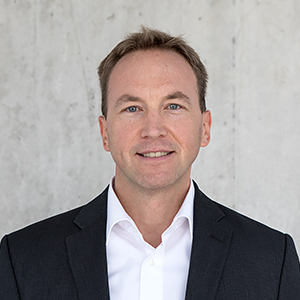
Making healthcare smarter with AI
While artificial intelligence is already taking on specific tasks in the healthcare sector today, it would technically be possible for it to do a great deal more. For this to happen, however, a legal framework and social acceptance will be essential, as the ZHAW’s latest Digital Health Report reveals.
It is the year 2050 and the toilets in most Swiss homes are networked – with the Internet of Medical Things (IoMT). Sensors in our toilet bowls analyse our urine and bowel movements and send a message to our smartwatch if certain values come back as being suspicious. The smart patch on our arm also busily collects data, sounding the alarm if our metabolic values deviate from the norm. Wearables and implanted microchips record our vital signs and send the information they glean to an app in which all of our personal health data is collected. This app in turn can make an appointment with a specialist for us right away if we so wish. In hospitals, artificial intelligence (AI) performs a large part of the data analysis work and is indispensable in the area of diagnostics. It is now also almost impossible to imagine a world in which AI isn’t there to lend a helping hand in the operating theatre.
This vision is not some kind of utopia, but rather a realistic forecast of what Switzerland’s healthcare system might look like in the future. It has been put together by healthcare professionals as part of the fourth edition of the ZHAW’s Digital Health Report (DHR), which is set to be published this autumn.
AI makes other technologies smarter
The DHR not only gives an insight into the benefits and risks of digital health, but also the driving forces behind it and the hurdles still to be overcome. The report’s authors have identified five technology groups that they believe have “disruptive innovation potential”: the IoMT, robotics, virtual/augmented reality (VR/AR), blockchain and artificial intelligence (AI). The latter is described as “the key to building bridges across different technologies.” “AI is a general purpose technology,” says Christian Russ, an expert in strategic IT management and digital technologies at the ZHAW School of Management and Law. The co-author of the DHR believes there are “exciting opportunities for combining AI with other technologies, such as robotics or AR and VR.” Russ goes on to explain that AI makes other technologies more usable and smarter and shares his view that “it will be immensely important for the further development of the healthcare sector.”

“AI is already widespread and accepted in specific areas of the healthcare sector, for example in the area of speech, text and image recognition for administrative matters.”
And the Swiss healthcare system has no choice but to evolve in the face of the challenges posed by rising costs, demographic change, a shortage of employees and, not least, the plethora of medical questions that remain unanswered. Russ opines that technologies alone cannot solve these problems. However: “They massively increase efficiency. For example, AI applications can take on redundant tasks, ensure data errors are avoided and significantly ease the strain on healthcare staff.”
From a purely technical standpoint, a great deal is possible

One of the basic prerequisites for the more extensive use of AI and other technologies in the healthcare sector is their social acceptance. The report, which looks at this aspect in terms of what is “wanted,” also examines what is technologically “possible” and what is “allowed” under the regulatory framework. When it comes to what is “possible,” there are almost no limits to the imagination, says Russ. “The question is more to what extent we can finance it.” With respect to what is “wanted,” the DHR reveals that the Swiss population has a very open stance towards digitisation. Making reference to a representative survey of hospitals conducted as part of a Master’s thesis he supervised, Russ also points to the fact that “AI is already widespread and accepted in specific areas of the healthcare sector, for example in the area of speech, text and image recognition for administrative matters.”
A sobering situation in terms of what is “allowed”
However, the situation is more sobering when it comes to what is “allowed.” “We still find ourselves in the starting blocks in this country,” says Russ. While efforts are being made by individual stakeholders, “there is no comprehensive approach at a national level.” Russ states that it is quite possible that Switzerland will take its cue from the EU and adopt its regulations in keeping with the system of autonomous adaptation. “The EU has been working on both legal and ethical frameworks for the use of AI in the healthcare sector for some time now.” As far as the legal limits of the use of AI are concerned, Russ believes that a balance needs to be struck between regulation and competitiveness, citing the EU Regulation on Medical Devices, which also applies to software, as an example. “While this regulation is necessary, it also presents a considerable hurdle, especially for start-ups.” Russ makes reference to the fact that the certification of medical software is very expensive, as are the associated quality assurance measures. In the case of AI applications, he states that it is also often difficult to prove that they work. “AI in the form of machine learning frequently resembles a black box.”

“Just as water finds its way in anywhere, AI will also find its way into the healthcare sector. The question is how we want to channel the water.”
For Russ, the risk of an uncontrollable superintelligence emerging at some point in the distant future is therefore not completely absurd. To ensure that our vision of the future does not in fact lead to a horror scenario, he believes that a great deal of educational work with respect to the potential and risks of AI is needed in addition to the establishment of an appropriate legal framework. Social debate on the matter will likewise be indispensable. Russ opines that the decision on what AI is and isn't allowed to do must be discussed continuously by the realms of society, business and politics. Just as water finds its way in anywhere, AI will also find its way into the healthcare sector, he adds. “The question is how we want to channel the water.”
ZHAW working to advance AI in the healthcare sector
Imaging, translation tools, therapy aids: the ZHAW is developing and evaluating AI applications in various areas. Examples of this work are provided below.
- Better image quality – better radiotherapy: Cone beam computed tomography (CBCT) plays an important role in the irradiation of tumours. During treatment, CBCT scanners generate 3D images of a patient’s anatomy, meaning that a tumour can be irradiated as accurately as possible. The problem with CBCT is that patients do not remain still, for example due to breathing, leading to the generation of image artefacts. Working together with the medical device company Varian Medical Systems, researchers from the School of Engineering have succeeded in eliminating these image artefacts using AI. “It significantly improves the image quality, as has been confirmed by an evaluation conducted by clinical experts,” says Frank-Peter Schilling, co-project leader of the Innosuisse-funded DIR3CT project. He states that AI has the potential to boost patients’ chances of survival by facilitating the more precise irradiation of tumours. The ongoing AC3T follow-up project, which also involves several South Korean partners, is aiming to minimise the harmful radiation emitted by CBCT scanners. The goal is to use AI to reduce the number of images taken and thus the number of scans required for tumour irradiation.
- Using AI to correct movements during therapy: Following a stroke, people often have to relearn certain movements. One of the problems they face in doing so is the tendency to resort to evasive movements to help them get around their limitations. “However, such movements can give rise to new complaints, including joint deterioration,” says Martina Spiess from the School of Health Professions. Working together with other researchers at the ZHAW Institute of Occupational Therapy and the ZHAW School of Management and Law, as well as external partners, she is developing an AI-based measurement instrument that has the ability to identify evasive movements and measure their severity. Using deep learning, an algorithm is being trained on the basis of everyday drinking movements. Spiess says that “therapists do indeed recognise whether patients are compensating in some way for their limitations.” However, she states that AI is much faster in performing assessments and can judge evasive movements more objectively on the basis of a scale. “This means that it can also recognise more subtle changes over the course of the therapy.” The aim of the project is to develop a cost-efficient tool that patients can also use at home, for example with their smartphone.
- Fewer misunderstandings thanks to machine translation: The Swiss healthcare system has long been multinational – both in terms of its patients and its employees. “This gives rise to language barriers and thus to misunderstandings and potential treatment errors,” says Caroline Lehr from the School of Applied Linguistics. Together with Anne Catherine Gieshoff, she has investigated which AI translation tools are being used in the healthcare sector, which of them are suitable for this purpose and where their use makes sense. “The potential offered by the tools is great. They can save valuable time.” Nevertheless, she feels there is a risk of incorrect translations and a situation arising in which the discussion partners focus too greatly on the tool. “Non-verbal and paraverbal communication can be forgotten in the process.” According to Lehr, current AI translation tools are suitable for simple conversations involving little emotion. “As soon as communication becomes more complex, more emotional and carries more significance in terms of the potential consequences, these tools fall short.” The project, which has now been concluded, succeeded in producing a decision-making aid for the use of machine translation.
0 Comments
Be the First to Comment!